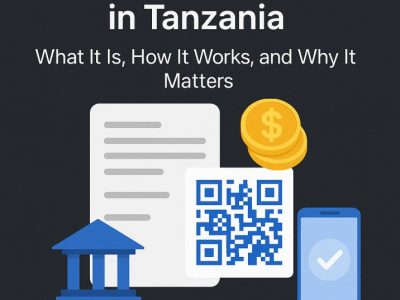In Tanzania’s journey toward a fully digitized government, the Government e-Payment Gateway (GePG) stands out as a key driver of financial transparency, efficiency, and accountability. As one of the most ambitious public financial management initiatives in the region, GePG in Tanzania has transformed how citizens and institutions interact with the government, especially in how they make payments for services, fees, and taxes.
In this article, we’ll break down what GePG is, how it works, the institutions involved, its benefits, challenges, and how businesses can plug into the system.
What is GePG?
The Government e-Payment Gateway (GePG) in Tanzania is a centralized system developed and managed by the Ministry of Finance and Planning (MoFP) in Tanzania. Its primary goal is to provide a secure, efficient, and transparent platform for collecting government revenues electronically.
Through GePG, all payments made to government entities, whether for hospital bills, university fees, business licenses, immigration charges, or tax, are routed through a standardized gateway that links public institutions, banks, and mobile money operators.
The system was rolled out as part of the Public Financial Management Reform Programme (PFMRP) and officially became mandatory for all government institutions in July 2018.
How Does GePG Work?
The core of GePG lies in payment reference generation, integration with banks and mobile money services, real-time payment tracking, and automated reconciliation. Here’s a simplified explanation of how it works:
1. Billing and Control Number Generation
Government institutions (e.g., TRA, universities, immigration, TANAPA, police) generate a bill in the system. The bill comes with a unique control number, which acts as the payment reference. This control number is linked to a specific transaction and payer.
2. Payment by Customer
The payer uses the control number to make a payment through any integrated payment channel. These include:
- Mobile money services: M-Pesa, Tigo Pesa, Airtel Money, HaloPesa
- Banks: NMB, CRDB, NBC, TPB, and others
- Banking agents and ATMs
- Online banking and apps
The control number allows the system to automatically detect the payment once it’s made, without requiring the payer to present receipts or confirm transactions manually.
3. Real-time Update and Reconciliation
Once payment is made, the data is pushed automatically to the GePG system and reflected in the Exchequer Receipt Voucher (ERV). Institutions can view real-time payment reports through their dashboards.
The system also interfaces with the Government Accounting System (IFMIS/MUSE) for direct reconciliation and revenue management.
Why GePG Was Introduced
Before GePG, government revenue collection was plagued with several issues:
- Fragmented systems across ministries and agencies
- Manual reconciliation and delays in confirming payments
- High risk of fraud and revenue leakages
- Limited payment options and low visibility for payers
GePG was designed to streamline revenue collection, reduce human error, cut fraud, and improve visibility of all incoming funds. It enforces uniformity and allows for central oversight while maintaining flexibility for each institution.
Key Features of GePG
- Control Number Billing System: Every transaction is tracked with a unique identifier.
- Multi-channel Payments: Supports mobile money, banks, agents, apps.
- Real-time Updates: Payments are instantly visible on institutional dashboards.
- Automated Reconciliation: Integrated with IFMIS and central bank systems.
- Regulatory Compliance: Enforces accountability under national public finance laws.
- Audit Trails: Provides detailed logs for each payment.
- Open API for Integration: Institutions and third parties (e.g. payment providers) can integrate with GePG securely.
Institutions Using GePG
Nearly every government body in Tanzania now uses GePG for revenue collection. These include:
- Tanzania Revenue Authority (TRA)
- Universities and Colleges
- Ministry of Home Affairs (Immigration)
- Tanzania National Parks (TANAPA)
- Municipal Councils
- Judiciary
- Ministry of Health and public hospitals
- Business Registration and Licensing Agency (BRELA)
- Tanzania Ports Authority (TPA)
Even smaller councils and regulatory agencies are now mandated to use the system for everything from local levies to permit fees.
How Businesses Can Plug into GePG
For businesses or service providers that facilitate payments on behalf of customers (like mobile apps, banks, or third-party fintech platforms such as ClickPesa), GePG offers integration options through its API. Businesses can:
- Fetch control numbers from government systems
- Display payment statuses to clients
- Allow direct payment through their platforms
- Generate and reconcile reports
This opens up opportunities for fintech providers to build layers of value-added services—like digital tax payment tools, GePG-enabled checkout platforms, and automated ERV report generation.
Benefits of GePG
- Transparency
Every shilling paid to the government is trackable and visible to the right institutions. - Convenience for Citizens
Citizens no longer need to visit physical offices to confirm payments—they simply receive a control number and pay from anywhere. - Efficiency and Speed
Payments are processed in seconds and instantly reconciled, improving service delivery. - Cost Reduction
Reduces paperwork, staffing burdens, and risks of cash handling. - Auditability
With built-in logs and automated receipts, audits are faster and more accurate.
Challenges and Criticisms
Like any large-scale public digital infrastructure, GePG has faced some challenges:
- Integration complexity for institutions with legacy systems
- System downtime during peak hours (though this is improving)
- Dependence on network availability in remote areas
- User education—many citizens are still unaware of how control numbers work
However, most institutions and payment providers agree that the long-term benefits far outweigh the initial setup challenges.
Looking Ahead
GePG is now a critical pillar in Tanzania’s Digital Government vision. As the system matures, future upgrades may include:
- QR-code-based payments
- Integration with regional e-payment systems
- More automated enforcement for non-payment
- AI-powered fraud detection
- Analytics dashboards for policymakers
The foundation for GePG in Tanzania is already laid: a nationwide, interoperable payment system that ensures citizen trust, institutional accountability, and financial integrity.


 M-Pesa Disbursement Explained: Setup, Limits, and Options
M-Pesa Disbursement Explained: Setup, Limits, and Options